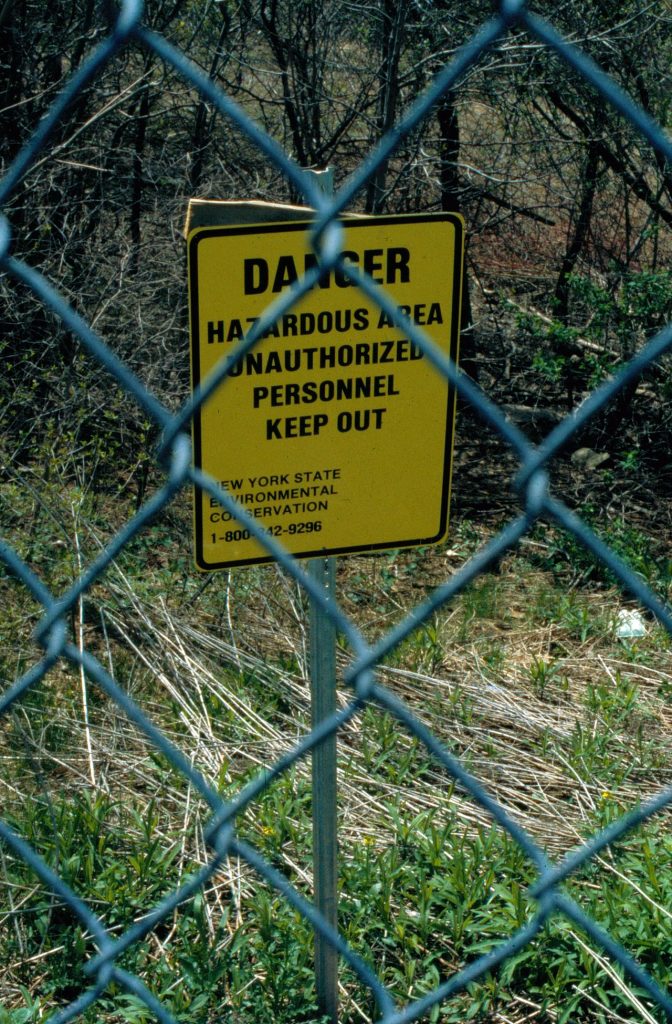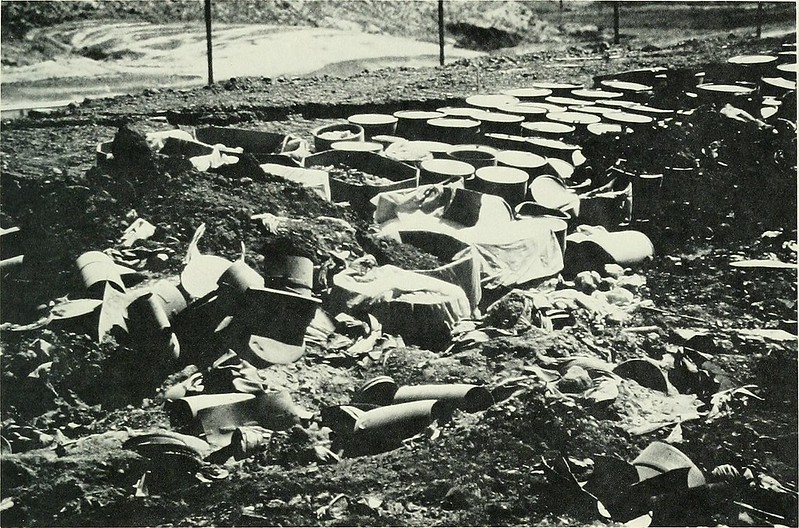Nimbys, Yimbys, and How Toxic Waste Kicked Off Both Movements.
For years, I’ve identified as a fervent Yimby advocate — an acronym which means “Yes, in my backyard.” It is often understood to mean not allowing slow bureaucracy and antagonistic old cranks to stop the construction of apartments and light rail. It arose as a term to oppose Nimbys, those who say “not in my backyard” to any sort of development, be it transit, shelters, or simply a new neighbor.
However, I think that Yimbyism, as a burgeoning new movement, can suffer from tunnel vision. This Yimby-Nimby divide can’t be easily placed on the traditional political spectrum: nice, white liberals with rainbow “ally” signs join forces with conservative suburbanites and anarchist collectives to oppose new developments — all for different ideological reasons, but united in cause nonetheless. On the flipside, the Yimby bandwagon scoops up fair housing advocates, activists, corporate landlords and union-busting gentrifiers alike. It’s not just the left and the right having big city housing fights. The difference between Nimbys and Yimbys may be, dare I say, nuanced.
I wanted to uncover the origin of the term Yimby, the world in which it was first used, and who was using it at its conception. What I found was a surprisingly engaging story about 1980s toxic waste policy in California — a story of well-meaning yet poorly-implemented government policy, corporate malfeasance, the birth of the environmental movement, and the pervasive “Nimby” syndrome that led to California’s toxic waste crisis.
America’s Pollution Panic
Mid-20th century America was marked by a feverish panic around pollution — in the air, in our water, and seeping into our earth through landfills. In 1941, high rates of respiratory problems led Pittsburgh to enact its first clean air laws. Rachel Carson’s Silent Spring was published in 1962, documenting the harm of pesticides on the natural environment. In 1969, the Cuyahoga River — which was described as “covered in oil slicks… bubbl[ing] like a deadly stew”— caught on fire, leading to the nation’s first clean water legislation. The first Earth Day was April 22, 1970.
In 1978, the neighborhood of Love Canal in Niagara Falls, New York was found to have “11… suspected carcinogens… percolating upward through the soil… leaching their contents into the backyards and basements of 100 homes and a public school.” The community had been built 28 years prior, atop a buried-over canal containing hundreds of barrels of toxic waste, left there by Hooker Chemical Company, the land’s previous owner. The contamination displaced almost 900 families, many impacted by the startling increase in skin rashes, miscarriages, and birth defects. President Jimmy Carter declared a State of Emergency for the area. New awareness of the environment’s fragility collided with the realization of toxics underfoot, and legislation spread across the country.

California’s Toxic Waste Woes
In 1979, only one year after the Love Canal tragedy, California bolstered the size and scope of its ‘Hazardous Waste Management Unit,’ followed two years later by state legislation creating clear standards for the definition of hazardous waste and its disposal guidelines.
In Southern California, vigorous public pressure and new legal guidelines led all five of its existing toxic waste landfills to shut down. The antiquated sites leached chemicals into surrounding communities, causing immense harm, even forcing residents to evacuate due to dangerous levels of methane in their homes. These would be replaced with 15 new, technologically advanced facilities spread throughout the region that could solidify the hazardous materials, neutralize the harmful effects, and prevent waste leechage disasters for communities in their vicinity.
However, it became essentially impossible for local governments to actually ‘site’ locations (approve plans to develop them in a specific location) for these shiny new treatment facilities. Private waste companies’ hesitated in the face of a precarious legal landscape. Insurance companies were timid in covering businesses engaged in toxics management. Most importantly, widespread community outcry bubbled up whenever a facility was proposed in somebody’s ‘backyard.’

As David Morell, former EPA analyst and Princeton professor of Toxics Management wrote: “[Facilities] cannot be sited in the face of intense local opposition. Most people would agree that such facilities are needed — but nearly everyone wants them located in someone else’s town.”
There are few situations more dire for a region than having nowhere to put the toxic trash. In light of increasing opposition and corporate paralysis, counties across Southern California banded together to form a joint commission, which would devise a plan to solve the toxics problem together, dubbed the “Southern California Hazardous Management Authority” (SCHMA). This committee developed a framework called the “fair-share doctrine,” which David Morell would eventually dub the “YIMBY framework.”
Speaking with Morell forty years later, he doesn’t take credit for coining the term Yimby. “I began to think about ‘Siting and the Politics of Equity’, which is the title of one of my articles, and at some point NIMBY became YIMBY in that context. I can’t swear that I’m the creator of it. I don’t know, I know I’m the creator of ‘residuals repository,’ a term that never caught on.”
Morell is a funny and lively character — who seemed surprised by my interest in this topic, but excited to explain the history to me. Morell was one of the foremost contemporary writers on this waste management debacle, penning multiple op-eds, articles, and even co-authoring the literal book on California toxics policies in the 1980-90s. Regardless of absolute credit, which can never be fully known, he’s the first to use it in any academic literature, and is cited by Housing.wiki as the earliest source of the term.
Notably, Morell actually used the acronym to mean “yes in many backyards,” rather than the modern adage “yes in my backyard.” The core idea of the “fair-share doctrine” was one of ‘siting equity’ with regards to treatment facilities: each county must create a report of its own annual waste production, and each county would be responsible for creating enough facilities to (roughly) adequately manage its own waste.
As Morell wrote in 1990, “under this philosophy, every county accepts that they are part of the problem, and thus has some responsibility to solve the problem.” Past siting proposals often involved massive facilities that would treat multiple counties — leading local communities to feel cheated, like they were given the bad end of a deal. In many ways, they were.
The YIMBY framework was quickly adopted into a statewide effort, with all counties across California tasked with accounting for their waste and creating plans to manage it. Just as things seemed to finally be moving in the right direction, and facilities were beginning to be sited, Republican governor George Deukmejian was elected in California in 1986, who nixed the program in favor of a more free-market, business-friendly approach — effectively undoing all the progress made throughout the 1980s. Morell told me that individuals in the toxic waste world called him the “Duke of Hazard,” a tongue-in-cheek nickname stemming from his poor policy positions regarding toxic waste management.
Yimby Criticism
The contrast between modern Yimbyism and the Yimbyism described by Morell is fascinating to me. Whereas modern Yimbys tend to lionize the free market and resist attempts at regulation, Yimbyism was actually first created as a framework to solve the problems caused by rampant, unregulated corporate power. In fact, Morell even goes so far as to say: “under the equity-based YIMBY philosophy, the waste management problem is… guided by the principles of equity and justice among communities, as opposed to pure market forces or raw political power.” In other words, Yimbyism works not by ceding power to the free market, but in balancing local needs against societal ones, allowing Nimbys to feel less of the uneasy distrust of both corporations and governments that had taken hold in the early environmental era.
In this view, Nimbys aren’t always selfish, property-value hawks, but sometimes marginalized groups fighting tooth-and-nail to prevent the further decline of their already under-resourced, under-served communities. Morell’s vision of Yimbyism asserts that we all have a responsibility to care for some ‘fair share’ of those in poverty, or those who can’t afford a home, or need to go to rehab or take the train. I asked David Morell about his thoughts on the modern Yimby movement; he echoed this idea, telling me that: “locating an enormous homeless shelter in a community puts an unfair burden onto that community… while it may be fair to the homeless. So you want to look at fair in both contexts… Equity is terribly important, and that’s both to those being served, and to those hosting the thing.”
The practical reality is that multiple, smaller facilities spread across regions makes the system more equitable. Morell is saying “yes, in many backyards”— not just in the backyards of low-income communities that bear the weight of infrastructure costs because high-income ones are able to better politically organize against development in their region.
This is where I worry that the modern Yimby movement can sometimes be misguided in its zeal. Modern zoning laws, minimum parking requirements, and legislation empowering frivolous lawsuits against development are all examples of how regulation can be hugely detrimental to growing communities and fighting climate change. Still, it was the lack of regulation that set up the conditions for both the Love Canal disaster and California’s waste crisis in the first place.
When I call myself a Yimby, I now like to think of myself as a sort of classical, Morellian Yimby — laissez-faire development is not a panacea that will solve all of our problems. The principles of equity and social justice are an inherent, crucial part of a successful Yimby philosophy — homeless shelters, low-income housing, and potentially burdensome infrastructure must not be a responsibility placed solely on the poorest communities. These deeply necessary developments still put a real, notable strain on a local environment if concentrated too heavily in one single area, rather than shared equally by a network of communities.
Although the term ‘Yimby’ was coined in the 1980s, the movement itself has only grown into a national force in the last decade. As such, the movement is still flexible and dynamic, full of people with eclectic and wide-ranging ideologies. As Yimbys, we should remember that Nimbys often don’t always oppose new developments because they’re selfish — sure, that happens too, but often, I think Nimbys are just wary that corporations and local governments don’t have their best interest at heart. Whether it’s America’s track record on environmental policy or its highway construction bulldozing low-income communities, our track record has built up a reflexive impulse to simply shun any new development.
As Yimbys, we have a responsibility to understand this nuance in our conversations — both to fight for equitable infrastructure and to persuade Nimbys about why good development can help, rather than hurt, our communities and broader systems. Taking lessons from Yimby’s birthplace in California toxics policy, I say yes to development—in many backyards.

Grant Frazier (Guest Contributor)
Grant Frazier is a 22-year-old urban policy enthusiast living in Provo, Utah. As an undergraduate student at BYU, he organized a nationally-covered protest regarding policies and enforcement of the university's 'Honor Code,' and co-founded the Utah journalism collective Prodigal Press, for which he was a contributor and strategic director. He recently graduated with a bachelor's degree in entrepreneurial management. Grant can be found on Twitter @gantisdant, on Substack as 'Something Answers Back,' or on his personal website, grantfrazier.page.


